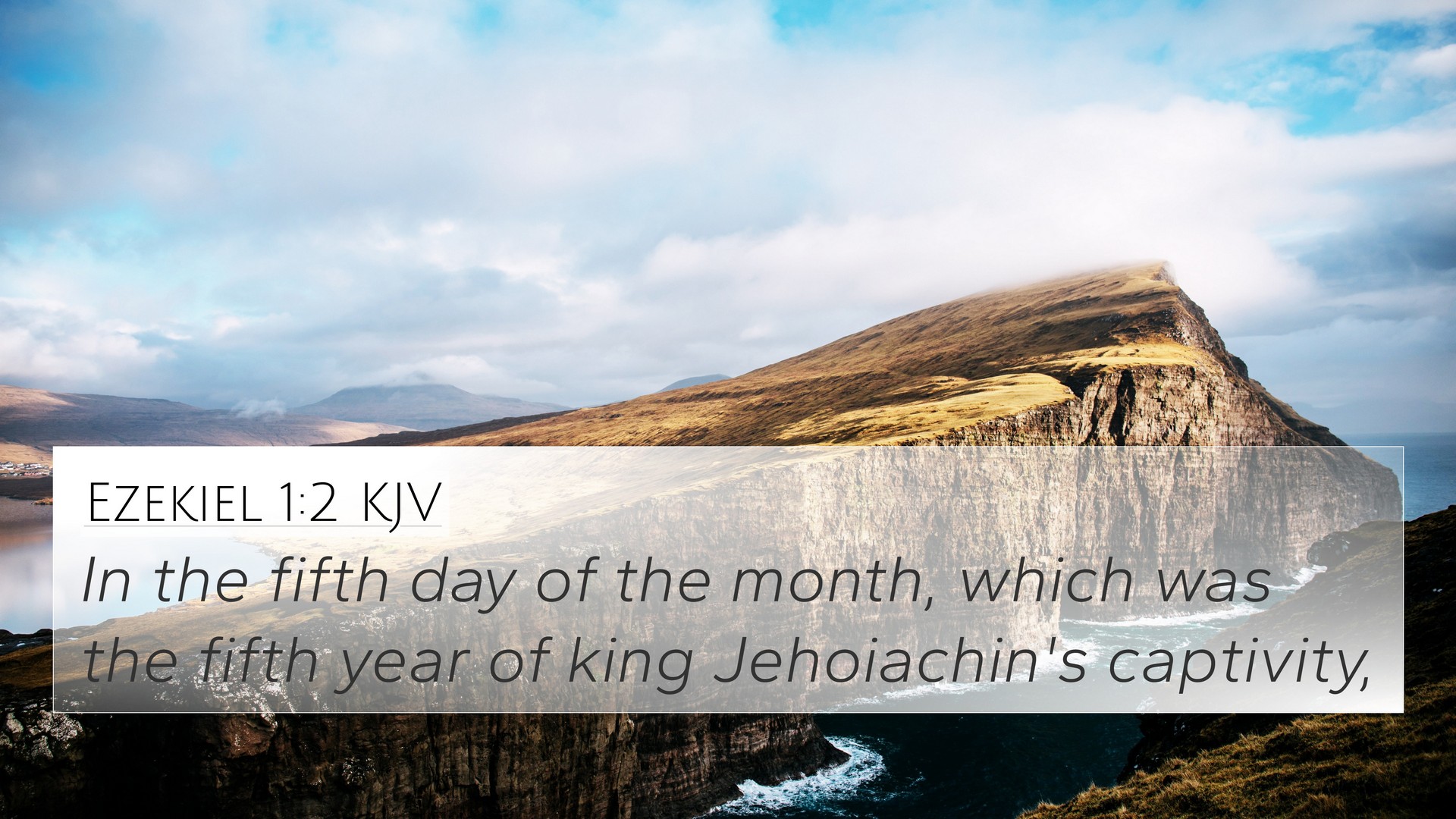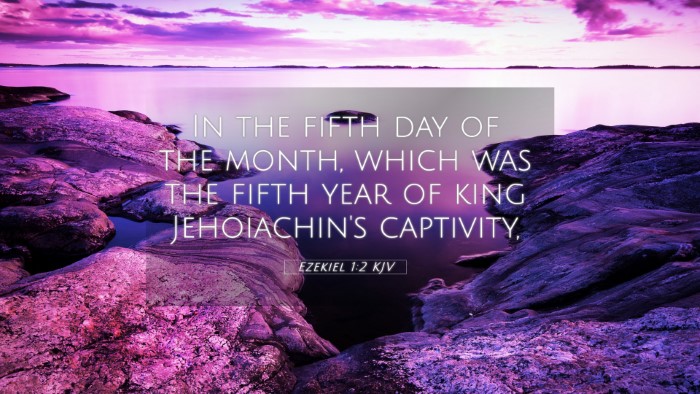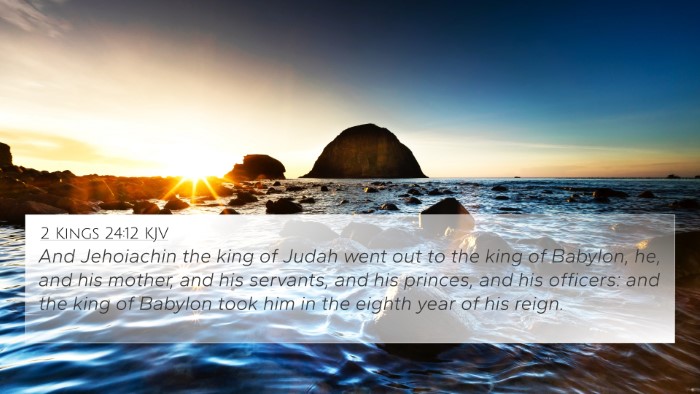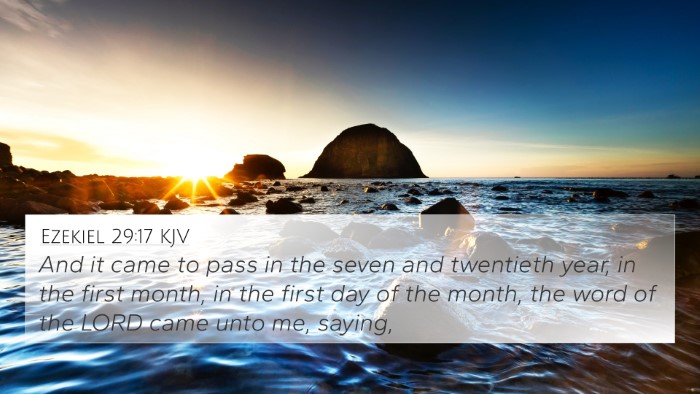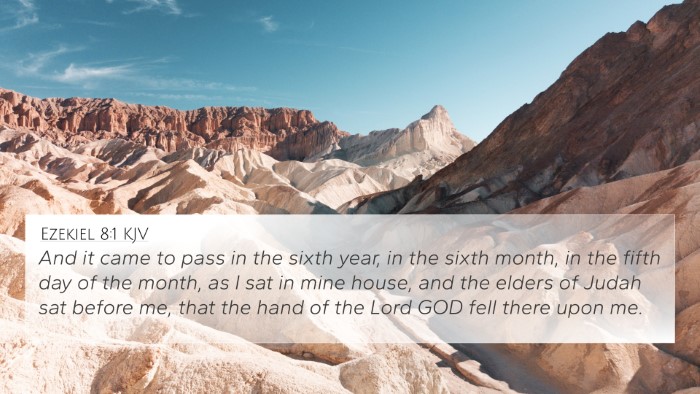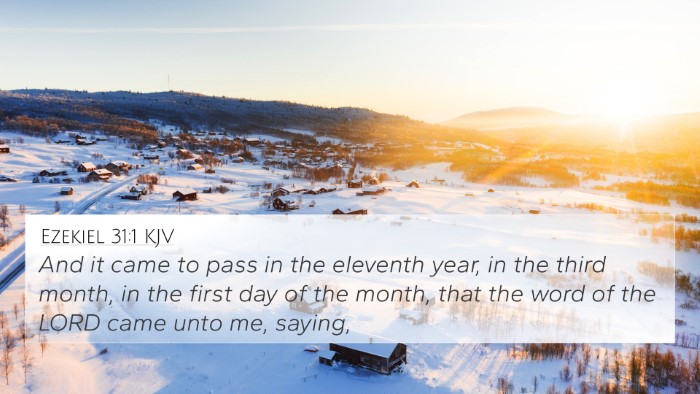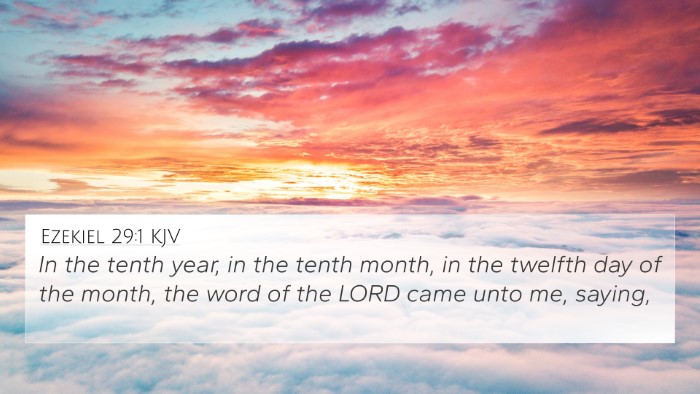Understanding Ezekiel 1:2
Bible Verse: Ezekiel 1:2
This verse reads: "In the fifth day of the month, which was the fifth year of king Jehoiachin's captivity," indicating the specific timeline during which the prophet Ezekiel received his visions from God. This verse sets the stage for an important prophetic revelation.
Summary of Insights
The significance of Ezekiel 1:2 can be explored through the insights from notable public domain commentaries:
-
Matthew Henry's Commentary:
Henry emphasizes the significance of timing in Ezekiel's prophetic ministry. The reference to Jehoiachin's captivity is critical as it situates Ezekiel's calling amidst a time of great national distress. This period of alienation represents a spiritual crisis as Israel is in exile.
-
Albert Barnes' Notes:
Barnes highlights the specific nature of the date provided. This is not merely a chronological marker but serves to remind the people of Israel of God's unfolding plan despite their circumstances. The captivity is a backdrop against which God's remarkable revelations are given.
-
Adam Clarke's Commentary:
Clarke explains that the mention of Jehoiachin's captivity not only provides a historical context but also signifies a turning point in Israel's history. Ezekiel’s visions emerge as a guide for the exiled community, filled with divine hope and future restoration.
Thematic Connections
Ezekiel 1:2 also invites connections with other Bible verses, revealing deep thematic links within Scripture. Here are some significant cross-references:
- Jeremiah 29:10-14: Both verses reflect the context of exile and the promise of restoration.
- Lamentations 3:22-23: Connects with the theme of hope amidst despair, paralleling Ezekiel's prophetic vision.
- Daniel 1:1-2: This underscores the historical backdrop of the Babylonian exile, linking to Ezekiel's timeline.
- Ezekiel 3:15: This verse continues the narrative of Ezekiel’s mission as a prophet amidst suffering.
- Ezekiel 33:21: Highlights God's continued communication with His people, regardless of their situation of captivity.
- Isaiah 40:1-2: A message of comfort that resonates with the vision Ezekiel received about God’s unwavering care.
- Matthew 1:12: This verse connects the lineage and restoration themes prevalent in the New Testament.
Analysis of Inter-Biblical Dialogue
The interactions between various books of the Bible create a rich tapestry of prophetic and historical dialogue. Ezekiel’s situation is echoed through the themes of exile, repentance, and restoration present in both the Old and New Testaments.
Through biblical cross-referencing tools, believers can navigate through these connections more effectively, providing a comprehensive understanding of God's Word.
Tools for Cross-Referencing
To deepen understanding through cross-referencing, several resources can be employed:
- Utilizing a Bible concordance allows for the identification of significant themes and scriptures that relate to one another.
- The Bible cross-reference guide can help facilitate a systematic study of interconnected verses.
- Employing cross-reference Bible study methods enhances comprehension of biblical narratives and teachings.
- Utilizing Bible chain references creates a roadmap for understanding thematic developments throughout Scripture.
Conclusion
The context provided by Ezekiel 1:2 serves not only as the beginning of Ezekiel's prophetic journey but as a reminder of God’s active presence in difficult times. As believers explore these connections through thematic studies and cross-references, they uncover a deeper understanding of God's plans for restoration and hope.
